Aim:
Transthoracic echocardiography (TTE) is the first-line imaging test for patients with chronic coronary syndrome (CCS) and the cornerstone of risk stratification is left ventricular (LV) ejection fraction (EF). Aim of the study was to investigate the value of TTE supplemented with strain echocardiography (STE) and lung ultrasound (LUS) to assess the risk of patients with CCS.
Methods:
In a prospective, single-center, observational study, from November 2020 to December 2022, 529 consecutive patients with CCS were recruited. All patients were evaluated at rest. A single vendor machine (GE Vivid E95) was used. EF with biplane Simpson’s method (abnormal cut-off < 50%), LV global longitudinal strain (GLS%, abnormal cut-off ≤ 16.2% by receiver-operating characteristics analysis) by STE, and B-line score (abnormal cut-off ≥ 2) by LUS (4-site simplified scan) were assessed. Integrated TTE score ranged from 0 (all 3 parameters normal) to 3 (all parameters abnormal). All patients were followed-up and a composite endpoint was considered, including all-cause death, acute coronary syndrome (ACS), and myocardial revascularization.
Results:
During a follow-up of 14.2 months ± 8.3 months, 72 events occurred: 10 deaths, 11 ACSs, and 51 myocardial revascularizations. In multivariable analysis, B lines [hazard ratio (HR) 1.76, 95% confidence Interval (CI) 1.05–2.97; P = 0.03], and GLS ≤ 16.2% (HR 2.0, 95% CI 1.17–3.45; P = 0.01) were independent predictors of events. EF < 50% was a significant predictor in univariate, but not in multivariable analysis. Event rate at 2 years increased from score 0 (8%), to score 1 (21%), 2 (23%), and 3 (40%), P < 0.0001.
Conclusions:
TTE with left ventricular ejection fraction (LVEF) can be usefully integrated with STE for GLS, and LUS for B-lines, for better prediction of outcome in CCS. The 3 parameters can be obtained in every echo lab with basic technology, no harm, no risk, and no stress.
Lauro Cortigiani ... Francesco Bovenzi
Aim:
Transthoracic echocardiography (TTE) is the first-line imaging test for patients with chronic coronary syndrome (CCS) and the cornerstone of risk stratification is left ventricular (LV) ejection fraction (EF). Aim of the study was to investigate the value of TTE supplemented with strain echocardiography (STE) and lung ultrasound (LUS) to assess the risk of patients with CCS.
Methods:
In a prospective, single-center, observational study, from November 2020 to December 2022, 529 consecutive patients with CCS were recruited. All patients were evaluated at rest. A single vendor machine (GE Vivid E95) was used. EF with biplane Simpson’s method (abnormal cut-off < 50%), LV global longitudinal strain (GLS%, abnormal cut-off ≤ 16.2% by receiver-operating characteristics analysis) by STE, and B-line score (abnormal cut-off ≥ 2) by LUS (4-site simplified scan) were assessed. Integrated TTE score ranged from 0 (all 3 parameters normal) to 3 (all parameters abnormal). All patients were followed-up and a composite endpoint was considered, including all-cause death, acute coronary syndrome (ACS), and myocardial revascularization.
Results:
During a follow-up of 14.2 months ± 8.3 months, 72 events occurred: 10 deaths, 11 ACSs, and 51 myocardial revascularizations. In multivariable analysis, B lines [hazard ratio (HR) 1.76, 95% confidence Interval (CI) 1.05–2.97; P = 0.03], and GLS ≤ 16.2% (HR 2.0, 95% CI 1.17–3.45; P = 0.01) were independent predictors of events. EF < 50% was a significant predictor in univariate, but not in multivariable analysis. Event rate at 2 years increased from score 0 (8%), to score 1 (21%), 2 (23%), and 3 (40%), P < 0.0001.
Conclusions:
TTE with left ventricular ejection fraction (LVEF) can be usefully integrated with STE for GLS, and LUS for B-lines, for better prediction of outcome in CCS. The 3 parameters can be obtained in every echo lab with basic technology, no harm, no risk, and no stress.
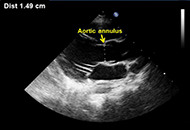 Coronary external diameter index for assessing coronary artery involvement in Kawasaki diseaseOpen AccessOriginal ArticleAim: Transthoracic echocardiography is commonly used to assess coronary artery dilatation in Kawasaki disease (KD). However, existing criteria often miss early abnormalities. This study examines [...] Read more.Andrea Azzarelli ... Francesco VierucciPublished: October 31, 2023 Explor Cardiol. 2023;1:103–113
Coronary external diameter index for assessing coronary artery involvement in Kawasaki diseaseOpen AccessOriginal ArticleAim: Transthoracic echocardiography is commonly used to assess coronary artery dilatation in Kawasaki disease (KD). However, existing criteria often miss early abnormalities. This study examines [...] Read more.Andrea Azzarelli ... Francesco VierucciPublished: October 31, 2023 Explor Cardiol. 2023;1:103–113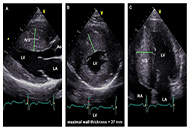 Echocardiographic predictors of outcomes in hypertrophic cardiomyopathyOpen AccessReviewThe use of echocardiography, a straightforward and widely available technique, allows for a comprehensive assessment of the patient with hypertrophic cardiomyopathy (HCM) under both resting and stre [...] Read more.Annamaria Del Franco ... Iacopo OlivottoPublished: October 31, 2023 Explor Cardiol. 2023;1:88–102
Echocardiographic predictors of outcomes in hypertrophic cardiomyopathyOpen AccessReviewThe use of echocardiography, a straightforward and widely available technique, allows for a comprehensive assessment of the patient with hypertrophic cardiomyopathy (HCM) under both resting and stre [...] Read more.Annamaria Del Franco ... Iacopo OlivottoPublished: October 31, 2023 Explor Cardiol. 2023;1:88–102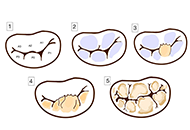 Mitral valve prolapse—arrhythmic faces of the valve diseaseOpen AccessReviewMitral valve prolapse (MVP) is a relatively common mitral valvulopathy and the most common cause of isolated primary mitral regurgitation (MR) requiring surgical repair. It affects about 1–3% of t [...] Read more.Maria Możdżan ... Karina Wierzbowska-DrabikPublished: October 31, 2023 Explor Cardiol. 2023;1:72–87
Mitral valve prolapse—arrhythmic faces of the valve diseaseOpen AccessReviewMitral valve prolapse (MVP) is a relatively common mitral valvulopathy and the most common cause of isolated primary mitral regurgitation (MR) requiring surgical repair. It affects about 1–3% of t [...] Read more.Maria Możdżan ... Karina Wierzbowska-DrabikPublished: October 31, 2023 Explor Cardiol. 2023;1:72–87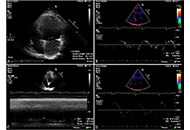 Cardiovascular imaging in COVID-19: insights into features and complicationsOpen AccessReviewThe clinical manifestations of COVID-19 which mainly involve the respiratory system may however affect also cardiovascular system. There are a lot and still increasing numbers of reports revealing c [...] Read more.Iwona Duraj ... Karina Wierzbowska-DrabikPublished: October 30, 2023 Explor Cardiol. 2023;1:59–71
Cardiovascular imaging in COVID-19: insights into features and complicationsOpen AccessReviewThe clinical manifestations of COVID-19 which mainly involve the respiratory system may however affect also cardiovascular system. There are a lot and still increasing numbers of reports revealing c [...] Read more.Iwona Duraj ... Karina Wierzbowska-DrabikPublished: October 30, 2023 Explor Cardiol. 2023;1:59–71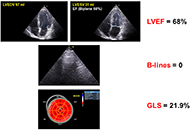 Ejection fraction, B-lines, and global longitudinal strain evaluated with rest transthoracic echocardiography to assess prognosis in patients with chronic coronary syndromesOpen AccessOriginal ArticleAim: Transthoracic echocardiography (TTE) is the first-line imaging test for patients with chronic coronary syndrome (CCS) and the cornerstone of risk stratification is left ventricular (LV) ejec [...] Read more.Lauro Cortigiani ... Francesco BovenziPublished: September 18, 2023 Explor Cardiol. 2023;1:49–58
Ejection fraction, B-lines, and global longitudinal strain evaluated with rest transthoracic echocardiography to assess prognosis in patients with chronic coronary syndromesOpen AccessOriginal ArticleAim: Transthoracic echocardiography (TTE) is the first-line imaging test for patients with chronic coronary syndrome (CCS) and the cornerstone of risk stratification is left ventricular (LV) ejec [...] Read more.Lauro Cortigiani ... Francesco BovenziPublished: September 18, 2023 Explor Cardiol. 2023;1:49–58